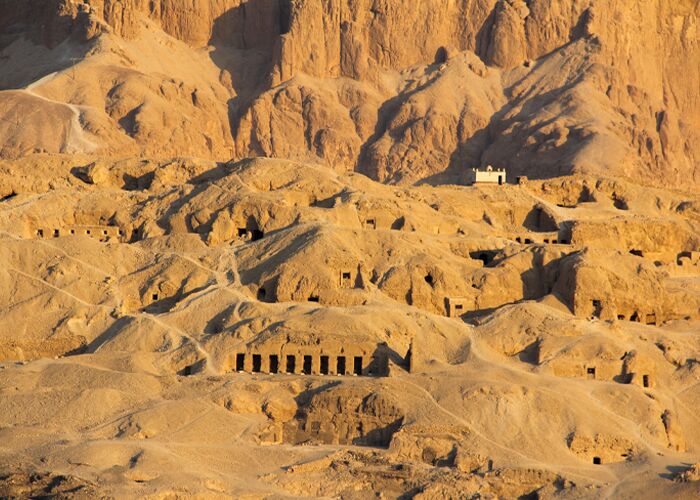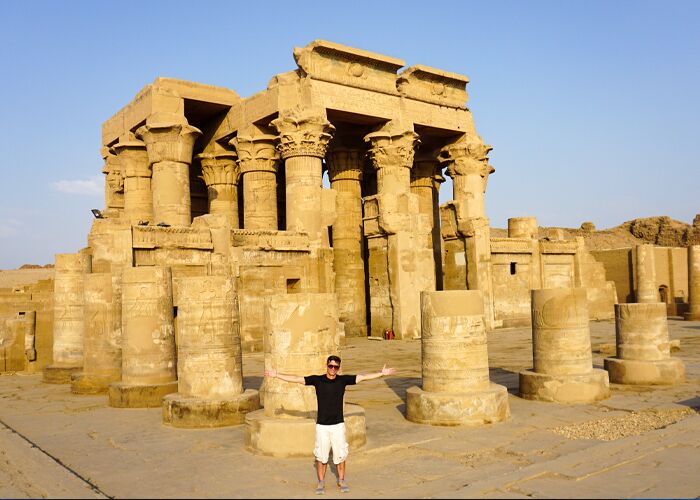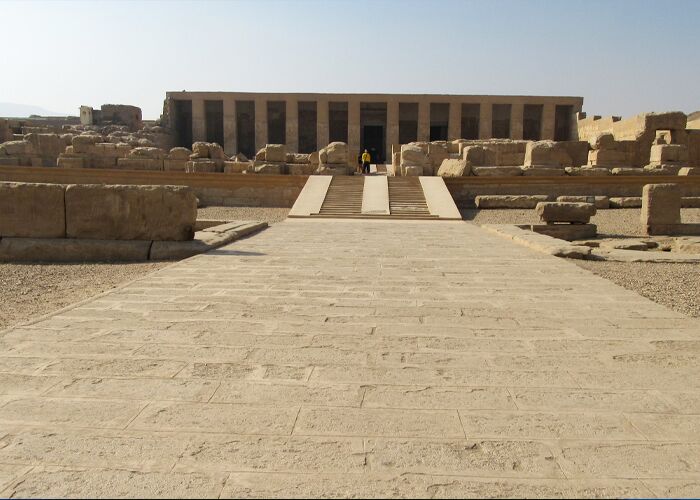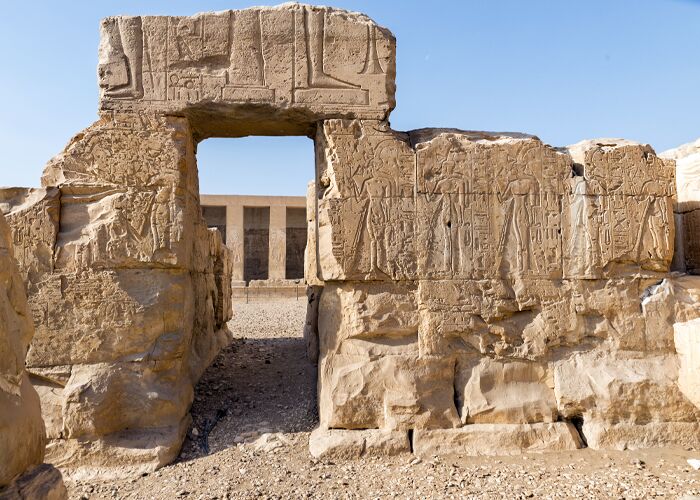The Valley of the Kings is included in the best Egypt vacation packages because it is located on the West Bank of the River Nile, directly across from Luxor City, and is the site of the world-renowned 'Valley of the Kings,' which is still the most well-known site for excavations of antiquities and ancient ruins today.
What is the Valley of the kings?
The Valley of the Kings, called Wadi el Moluk in Arabic, also known as the Valley of the Gates of the Kings, is a valley in Egypt that was the place of stone tombs that were discovered for the pharaoh’s tombs and important kings of the Kingdom over more than a period of nearly 500 years, starting in the 16th century BC and intending until the 11th century BC.
The Valley of the Kings, located in the south of Egypt, is one of the important tourist attractions that attract many tourists from inside and outside Egypt. The visit to the Valley of the Kings is intensified, especially in the winter, so that tourists and visitors can enjoy the warm climate of southern Egypt winter to discover the most valuable ancient Egyptian treasures, which date back to the era of the Pharaohs.
Where the Valley of the Kings is one of the areas that was a group of tombs of kings and queens in ancient Pharaonic times. And those who believe that they are immortal on earth will return to life and their Kingdom again after their first departure from life. Which gave them the desire to bury them in their valley and keep their treasures and wealth inside their grave, a king or a queen.
Where is the valley of the kings?
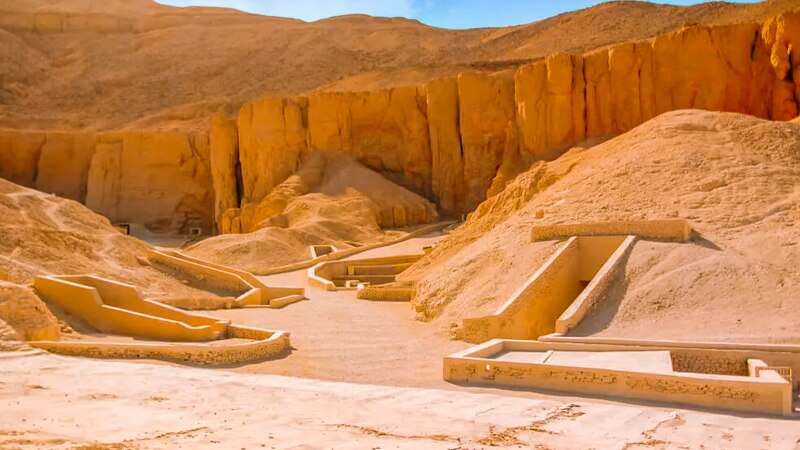
The Valley of the Kings is located in Egypt, specifically in Luxor on the western bank of the Nile behind Mount Taiba. It is also the main pharaoh’s tombs of the New Kingdom, who ruled Egypt between 1539-1075 BC. Of the kings of the family 18-20. At the same time, the valley is divided into two parts, the eastern valley, and the western valley. The Valley of the Kings also became a land for the royal burial of pharaohs.
Valley of the king’s facts
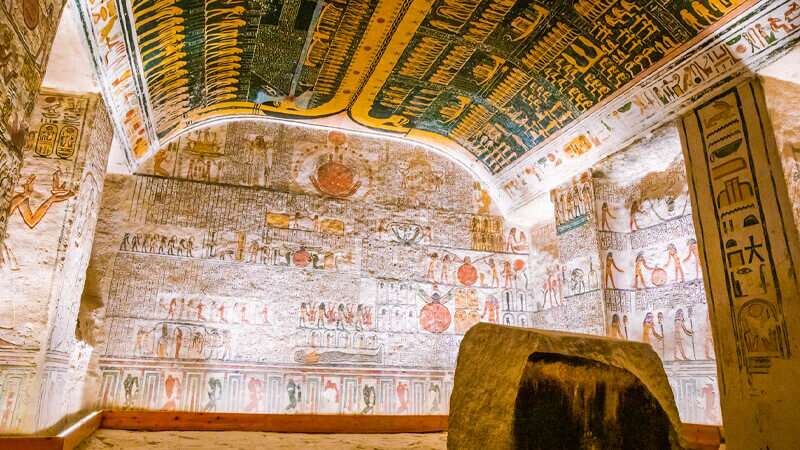
The location of the Valley of the Kings has been carefully selected. In addition to this, the fact that it is located directly on the western side of the Nile is really important. As a result of the fact that the sun god was believed to have “died” on the horizon of the west and then “reborn” on the eastern horizon, the horizon of the west eventually came to be associated with morbid themes. For this reason, ancient Egyptian tombs were almost always located on the western bank of the Nile.
Under the protection of a pyramid-shaped peak that grew out of the cliffs that influenced the valley, the strong kings of the New Kingdom were laid to rest. Even down to the specific valley where the royal tombs were unearthed, nothing about the choice of those locations was left to chance. The pyramid represented rebirth and, by extension, everlasting life; hence, the presence of a natural pyramid was viewed as evidence of the existence of a divine being. This area, as well as the mountain itself, was considered holy for the funeral aspect of the goddess Hathor, also called the “Mistress of the West.”, All royal tombs in the Valley of the Kings in Luxor are 100% carved from rock.
The royal tombs contain more than 2,100 pharaonic inscriptions on the walls. Tomb No. 9 of King Ramses V and King Ramses VI contains 100 pharaonic inscriptions. It was also built in 278 BC.
Most of the royal tombs are of small spaces, consisting of a single burial chamber that can be accessed through a staircase that leads down to a passageway, through a well dug underground, or a group of complex passages, eventually reaching the burial chamber of the king’s sarcophagus.
The Processes of Discovery and Exploration valley of the kings
The discovery of ancient tombs in the Valley of the Kings is not an unusual thing. In reality, of course, even in the investigation of the King Tut Ankh Amon Tomb, a significant number of 62 famous tombs had already been found. Many of these were small tombs, which included nothing more than a single hole in the earth, but the larger ones revealed about one hundred more underground rooms.
In 1799, the academics who were part of the French expedition, especially Dominique Vivant, made accurate maps of all the tombs that had been discovered up to that point. At the same time, the western valley of the Kings was found for the very first time. Cemetery 22), the scholars of the French campaign also produced two complete volumes describing the city of Thebes and the surrounding area within their historiographic work Describing Egypt, which they brought out in a total of twenty-four books describing the history of Egypt and what their eyes fell upon from various aspects of life in the country and during the time that they chose to stay in it. Cemetery 22) is the place of a cemetery that was discovered during the French campaign.

Unfortunately for “modern” archaeologists, many of these rooms and tombs were discovered to have been pillaged by ancient adventurers. Thankfully, the internal treasure that was found there was the artwork of ancient Egyptians; those murals allowed specialists to get a glimpse into the lives of the Pharaohs and other important figures who were buried there.
Within the schema of the Amarna Royal Tombs Project (ARTP), an archaeological expedition created in late 1990 there is currently excavation activity today. Primitive equipment was used to make some of the first tomb discoveries many years ago, and the places of these tombs were only completely moved at the time.
The current archaeological efforts are making use of cutting-edge technology in their quest to discover new information at ancient tomb sites as well as in places of The Valley of the Kings that have not before been explored.
How many kings are buried in the Valley of the Kings?
The Valley of the Kings contains 63 tombs and chambers, varying in size and purpose, from a simple pit to a complex tomb with more than 120 chambers.
How was the Valley of the Kings built?
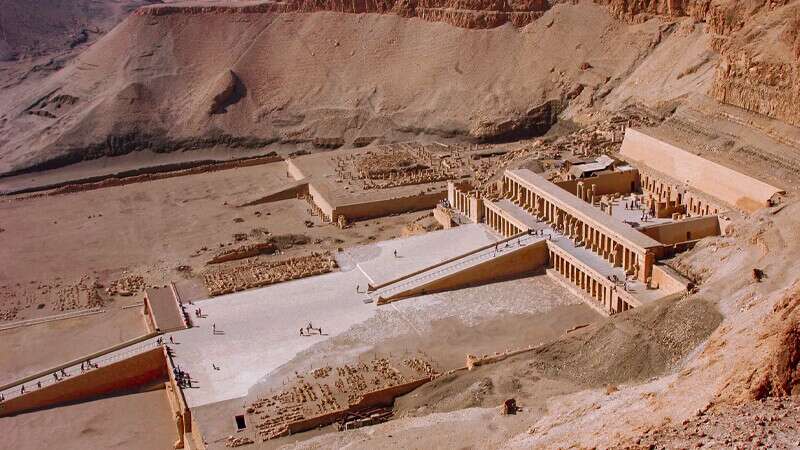
As can be shown from the kingdoms discovered in several tombs in the Valley of the Kings, it was customary to carry out a ritual rite before beginning the work. This ceremony consisted of setting offerings and various work equipment in specific holes.
After the area where the tomb was going to be completed had been cleared of any rubbish, the stonemasons got to try and create the building. The tombs were excavated from the ductile limestone that was found in the mountains of the valley. The quality of the limestone varied greatly from region to area. In reality, the gaps in the stones usually required an improvement to the previous design, and it was not always possible to get rid of the rocks.
In these files, the shipping and immediately following recovery of each piece of equipment were carefully recorded in place to prevent armholes from developing. Because the wedges could be removed without much effort, they were usually recovered from being changed.
Baskets were used to recover the material from the tomb as the ancient Romans chipped away at the stone blocks.
After the work on the first passage had been completed, the employees who whitewashed the walls prepared them to be personalized once the next section had been finished. If the stone was of good quality, only a thin covering of plaster was required, but if it was of a lower rate, the walls had to be balanced, and the cracks had to be filled in.
What is the Valley of the Kings famous for?
The discovery of TuTutankhamun’somb established a shock and increased the profile of Ancient Egypt among modern tourists and academics. Because while his tomb had been robbed at least twice previous to its discovery by Howard Carter in 1922, these robberies likely took place not too long after the ph pharaoh’s urial because of the items, some of which were taken (including oils and perfumes that would have quickly spoiled) and the evidence that the tomb had been regained.
Because its entrance was buried under debris and chips of stone excavated during the construction of other tombs (in particular KV 9, the burial of Rameses VI) and washed there during the infrequent floods that occasionally swept the area, the tomb was probably protected from further attacks because of this. During the Rameside period, it appears that workers’ allowances were erected on top of the position of the entrance, which suggests that the Egyptians even were unaware that there was a tomb beneath them.
The Tomb of Tutankhamun, discovered by Howard Carter on November 4, 1922, is, without a measure, the most well-known tomb in the Valley of the Kings. Tutankhamun was Ak Akhenaten’s son-in-law and passed away when he was probably 18 or 19 years old (the exact cause of his death is unknown).
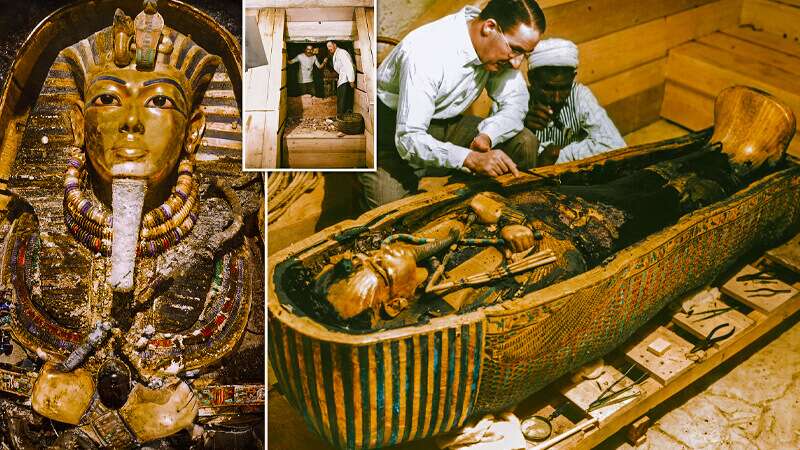
On the east side of the tomb is a doorway that can be reached by descending 16 steps. The entrance leads into a short passage that is around 7.5 meters in length. At the far end of the corridor, another door provides access to an antechamber, the largest chamber in the tomb, and was discovered to be crammed to the brim with multiple types of burial goods. There is a side chamber found in the southwest corner (to the far left). Two wooden statues of the pharaoh, each around the size of a people, were discovered close to the north wall. The yellowish crystalline sandstone sarcophagus may be found in the exact center of the room. The sides of it are adorned with religious scenes and lyrics, and at the corners, there are four relief statues of goddesses with their wings spread out in a protective posture. The pharaoh’s mummy was protected within the casket in one of three elaborately carved and adorned wooden coffins.
A little storage may be seen on the east side of the tomb chamber. On the walls of the room are painted scenes, which were hastily executed, showing Pharaoh Ay, TuTutankhamun’successor, performing the “o” ending of the mouth” “ceremony on the mummy and Tutankhamun making offerings to various gods. Both events occurred during the “o” ending of the mouth” “ceremony.
n addition, a radar scan that was carried out close to the tomb of King Tutankhamun in the Valley of the Kings in Egypt uncovered evidence that points to the presence of additional rooms buried beneath the walls of the tomb. A contentious hypothesis has been brought back to life: the burial site of the young king really conceals a larger tomb, which may be the resting place of the enigmatic Egyptian Queen Nefertiti.
Some other tombs are found in Valley of the Kings such as:
- Toya and Yoya
- TOMB OF RAMSES VII (1)
- TOMB OF RAMSES IV (2)
- TOMB OF RAMSES IX (6)
- TOMB OF MERNEPTAH (8)
- TOMB OF RAMSES VI (9)
- TOMB OF RAMSES III (KV 11)
- TOMB OF RAMSES I (16)
- TOMB OF SETI I (17)
- TOMB OF TUTHMOSIS III (34)
- TOMB OF AMENOPHIS II (35)
- TOMB OF HOREMHEB (KV 57)

